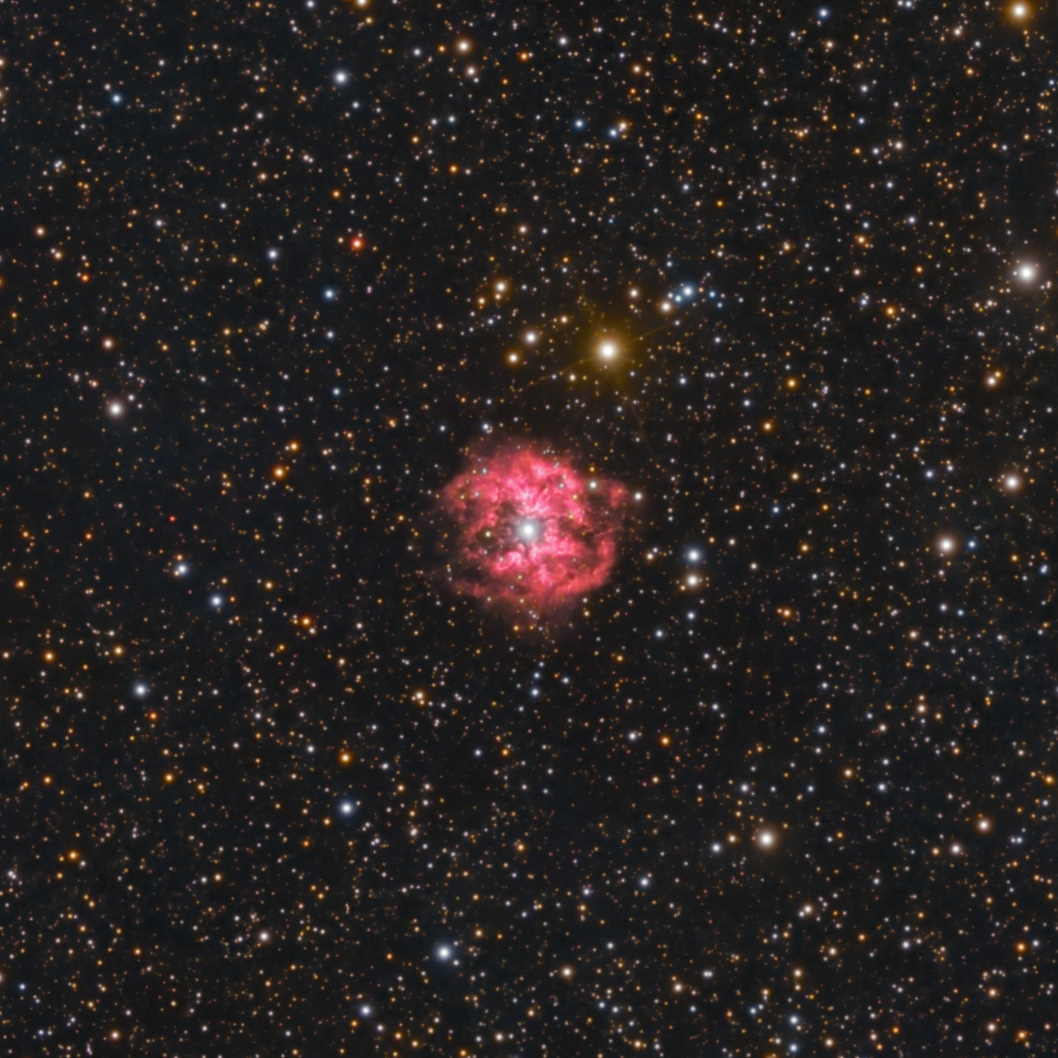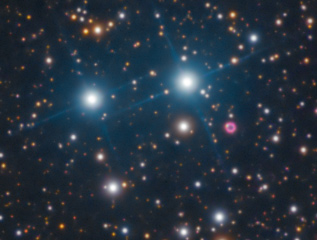
Sh2-80 is a small, fairly dim and obscure (seldom imaged) Wolf-Rayet nebula,
visually located in the constellation Sagitta. It was not discovered until 1938. WR 124 is the bright star at the center of the nebula, a Wolf-Rayet star creating the nebula. WR 124
is one of the fastest known "runaway stars," explained here. There's more on this particular star
here
When I looked at the full, uncropped image on my computer screen (the image above is severely cropped; uncropped images can be viewed by clicking on the links above the image above),
I was surprised and thrilled to see a tiny (about 7 arseconds across), bright red ring, obviously a planetary nebula, in the image. Alas, I was not the first to notice this
nebula, which was discovered by another amateur in 2013. It is named after him, Lilge 1. To see this pretty little thing, click on the link to the uncropped versions given
above, and you will find the tiny red ring about halfway between Sh2-80 and the right edge of the image (just below and to the right of the two moderately bright blue stars).
This full-resolution cutaway from that area of the uncropped version shows the little planetary nebula:

Sh2-80 is thought to be about 21,000 light years from us, and it is expanding at the rate of about 93,000 mph/150,000 kph. It is about six light years across.
The James Webb Space Telescope has imaged this little nebula, here
There are about 13,000 stars in the uncropped field, which is slightly larger than a full moon; there are a lot of stars in the sky that we don't see!
Click on the image to toggle between a color version and a pure Ha version. Normally, pure Ha does not make an interesting version of a tiny nebula, but I think it does
a good job of illustration the roiling going on in a Wolf-Rayet nebula.
Copyright 2024, 2025 Mark de Regt